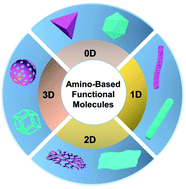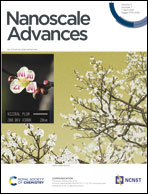The use of amino-based functional molecules for the controllable synthesis of noble-metal nanocrystals: a minireview
Abstract
Controlling the morphologies and structures of noble-metal nanocrystals has always been a frontier field in electrocatalysis. Functional molecules such as capping agents, surfactants and additives are indispensable in shape-control synthesis. Amino-based functional molecules have strong coordination abilities with metal ions, and they are widely used in the morphology control of nanocrystals. In this minireview, we pay close attention to recent advances in the use of amino-based functional molecules for the controllable synthesis of noble-metal nanocrystals. The effects of various amino-based molecules on differently shaped noble-metal nanocrystals, including zero-, one-, two-, and three-dimensional nanocrystals, are reviewed and summarized. The roles and mechanisms of amino-based small molecules and long-chain ammonium salts relating to the morphology-control synthesis of noble-metal nanocrystals are highlighted. Relationships between shape and electrocatalytic properties are also described. Finally, some key prospects and challenges relating to the controllable synthesis of noble-metal nanocrystals and their electrocatalytic applications are proposed.



 Please wait while we load your content...
Please wait while we load your content...